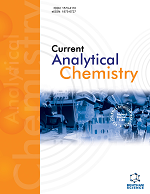
Full text loading...
We use cookies to track usage and preferences.I Understand

Essential oil components play an important role in food flavoring industries and chemical industries. Essential oil from Pinus sylvestris (pine oil, scotch pine oil, Turpentine Oil), Leucadendron argenteum (silver fir needle oil), Impatiens balsamina (balsam fir needle oil), and Abies sibirica (siberianfirn needle oil) contains numerous active ingredients that help to develop drug preparation.
To compare the phytoconstituents present in the essential oil of Pinus sylvestris (wood, cone, needle), Leucadendron argenteum (needle), Impatiens balsamina (needle) and Abies sibirica (needle).
This study concentrates on analyzing the natural flavor in six essential oils of Pinus sylvestris (wood, cone, needle), Leucadendron argenteum (needle), Impatiens balsamina (needle), and Abies sibirica (needle) subjected to gas chromatography analysis with the condition of 40ºC for 2 min, 40ºC to 180ºC @ rate 15 ºC; 180ºC to 230ºC at 10ºC/min and final hold at 230ºC for 2 min. AFID detector was used.
The results showed the presence of several organic flavoring compounds, especially terpenes and terpenoids. Alpha pinene are the major flavoring molecules present in all the selected oils with a higher percentage. Alpha pinene (60.25% and 50.37%) was found to be highest in turpentine and scotch pine oils respectively. Alpha terpineol (51.73%), limonene (34.33%), beta-pinene (36.12%), and bornyl acetate (35.94%) were found higher levels in Pinus sylvestris, Leucadendron argenteum, Impatiens balsamina and Abies sibirica respectively. Alpha-pinene, beta-pinene, alpha terpineol, beta phellandrene, alphafenchene, borneol, limonene, camphene, bornyl acetate, myrcene, and delta 3 carene are the most common phytocompounds found in the essential oils.
Alpha pinene, beta pinene, and limonene were present in all four plants Pinus sylvestris, Leucadendron argenteum, Impatiens balsamina and Abies sibirica and also utilized in aromatherapy and the perfume industry.

Article metrics loading...

Full text loading...
References


Data & Media loading...